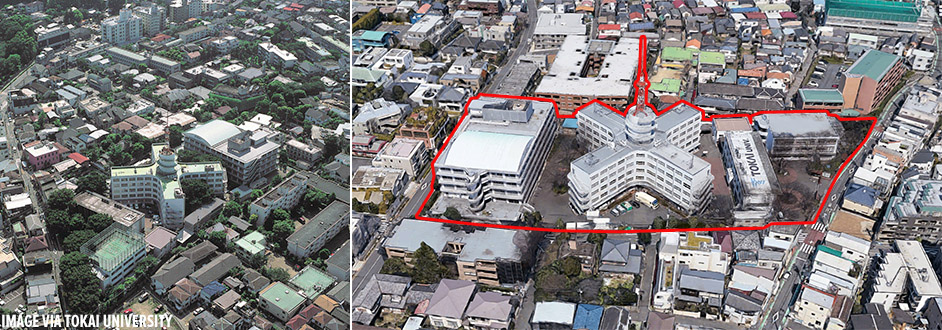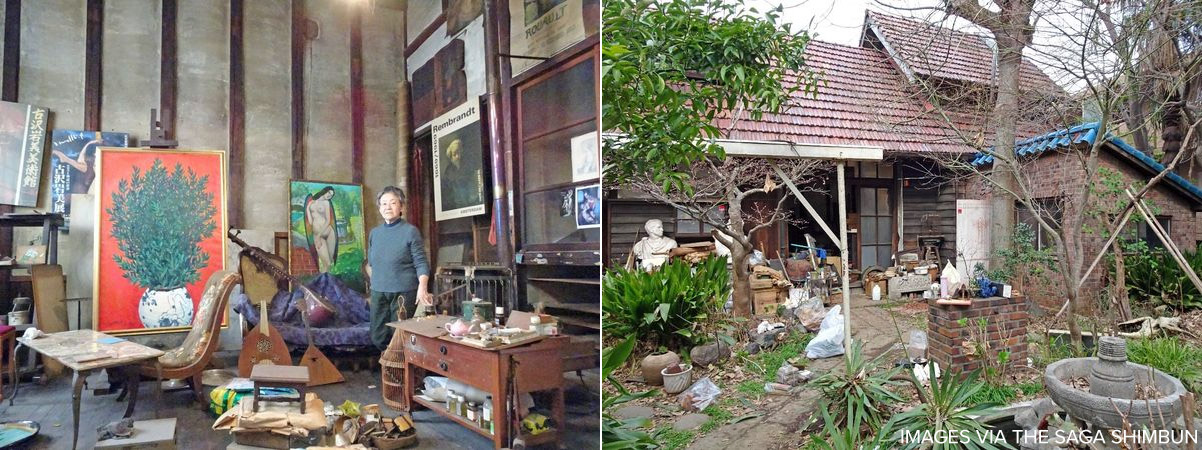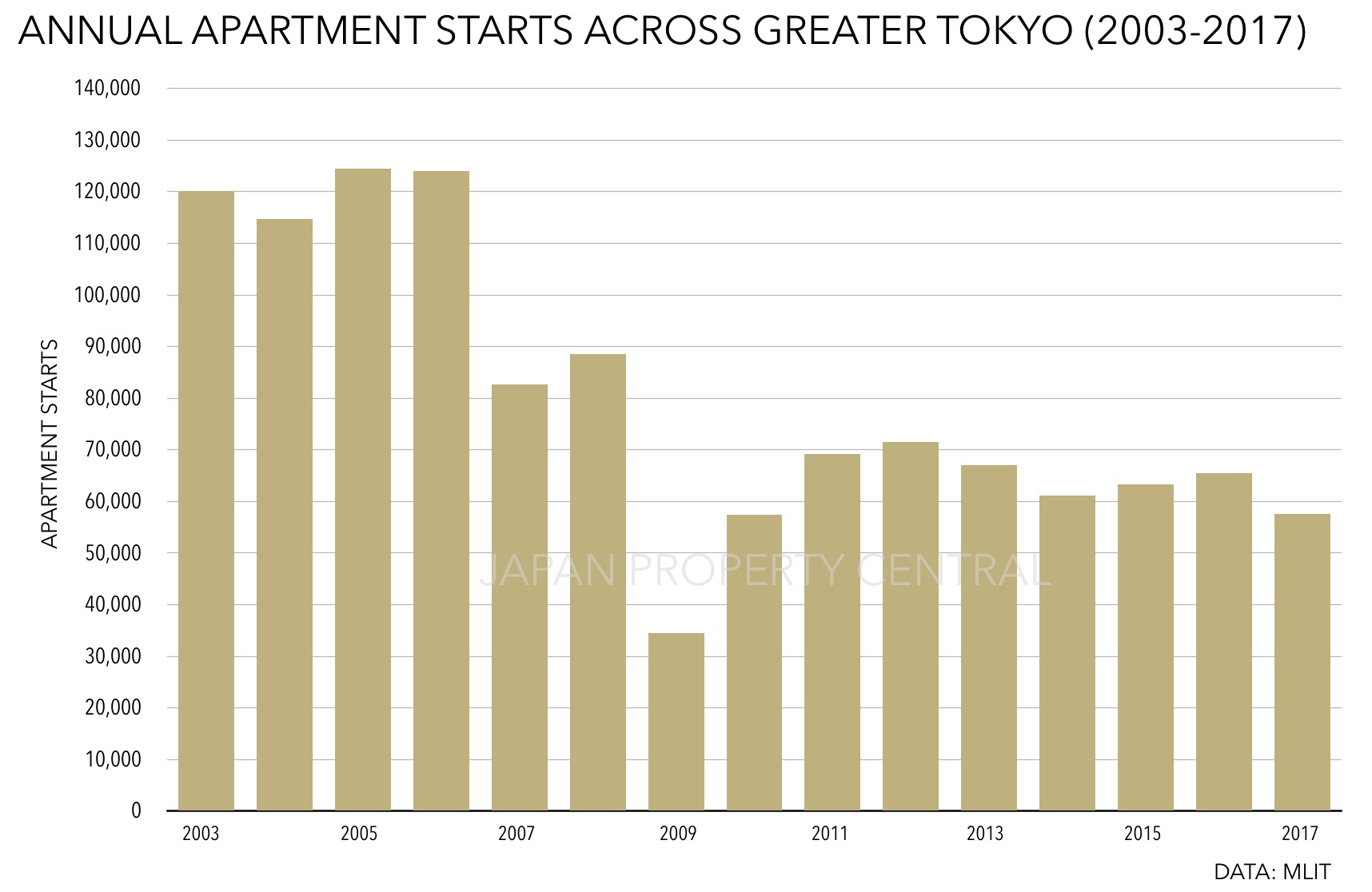Price-Earnings Ratios for New Apartments in Tokyo in 2017
May 14, 2018Japan real estate,japan real estate market,tokyo real estate,Tokyo apartment prices,Tokyo real estate market,Japan Real Estate NewsReal Estate News,Market Information,All,Tokyo

According to Tokyo Kantei, the price-earnings ratio (PER) for brand new apartments in the greater Tokyo region was 24.49 in 2017, down from a record high of 28.66 seen in 2016. A PER of 24.49 indicates a gross yield of approximately 4.04%. A PER above 20 will imply a gross yield below 5.00%. In this survey, 90% of locations had PERs of over 20.
The average price of a 70 sqm (753 sq.ft) new apartment in 2017 was 66,840,000 Yen, up 2.9% from 2016, while the average monthly rent was estimated at 224,905 Yen, up 2.5%.Read more
Falsified documents submitted to 11 Bank Branches
May 11, 2018Buyer Beware!,Real Estate News,All
A report by the Asahi Shimbun newspaper on May 5, has alleged that that mortgage fraud scandal now extends to 11 Suruga Bank branches across Japan. The newspaper alleges that five companies are involved in obtaining loans from various Suruga branches that were based on falsified income statements, resulting in over-loans to borrowers. The Suruga branches that have discovered faked documents include Tokyo, Shibuya, Shinjuku, Midtown, Futako-Tamagawa, Kawasaki, Omiya, Tama Plaza, Sendai and Kyoto.
On May 7 the newspaper dropped another bombshell, reporting that the lawyers representing a group of investors had received an audio recording of a phone call that took place in April 2016 between a real estate agent and an alleged bank employee. In the recording, which was released to the public, the broker asked the bank staffer for advice on what to do if a sales agency was unable to tamper with the loan application documents. The bank staffer mentioned a company that takes on a lot of those requests. The broker then called the company in question and they confirmed that they could falsify documents. Suruga's share price briefly dropped by as much as 11% the following morning before recovering.
Tokai Uni to rebuild modernist building on Yoyogi Campus
May 10, 2018Modernist Architecture in Japan,Save Japan's ArchitectureReal Estate News,Redevelopment & Reconstruction,All,Tokyo

Tokai University is in the process of planning a redevelopment of their Yoyogi Campus in Shibuya’s Tomigaya neighborhood. The project may include the reconstruction of the No. 2 campus building - a cross-shaped modernist building that was designed by architect Mamoru Yamada and completed in 1958. Yamada was one of the pioneer’s of Japan’s modernist movement and a professor at Tokai University’s engineering department.Read more
Revision to Building Standards Act could see extra allowances for fireproof buildings
May 9, 2018Real Estate News,All,Laws and Lawsuits

The government is in the process of making a potential revision to the Building Standards Act that could provide an extra 10% to the building footprint ratio in quasi-fire prevention districts. The goal of the revision is to encourage the reconstruction of older, non-fireproof buildings.
Under the proposed revision, if an older building in a quasi-fire prevention district is replaced with a fireproof or quasi-fireproof building, an extra 10% may be added to the footprint ratio (called the kenpeiritsu). This would mean that a building built on a 100 sqm block of land in a zone with a 60% footprint ratio could cover up to 70 sqm of the land instead of the original limit of 60 sqm. A ratio of up to 100% is already possible for fireproof buildings built in fire prevention districts in Commercial Zones.Read more
Artist’s atelier in Tokyo to be demolished
May 8, 2018Save Japan's ArchitectureDemolition,Real Estate News,All,Tokyo

Update: The house was demolished in 2018 and replaced with a subdivision of 10 homes.
The residence and atelier of Iwami Furusawa (1912-2000), surrealist painter and Japan’s Dali, will be demolished. A farewell party was held in late March by local volunteers.
Furusawa made his residence in Tokyo’s Itabashi ward after WWII, building his private art studio from a salvaged barn from a nearby farm. At the time, the neighborhood was a mixture of small workshops and homes. Read more
New apartment starts in 2017 reach lowest level in 7 years
May 7, 2018Japan real estate,japan real estate market,tokyo real estate,Tokyo real estate market,Japan Real Estate NewsReal Estate News,Market Information,All,Tokyo

Apartment starts in the greater Tokyo area in 2017 reached the lowest level seen in seven years. According to the Ministry of Land, Infrastructure, Transport and Tourism (MLIT), apartment starts were 57,591 units, down 12% from 2016. The Ministry cites an early rush by developers to get large-scale projects off the ground in the lead up to the 2020 Olympics and difficulty in securing sites for residential developments as the two contributors to a recent slow down in residential construction.Read more
City to purchase Lafcadio Hearn’s residence for 175 million Yen
May 4, 2018Traditional Japanese Architecture,Traditional Japanese Homes,Shimane,Matsue City,Save Japan's ArchitectureHistoric Properties,All

Matsue City in Shimane Prefecture plans to acquire the former residence of writer Lafcadio Hearn for 175 million Yen (approx. 1.6 million USD). The seller is a private individual. The traditional, single-storey Japanese residence has a total floor area of 244 sqm (2,645 sq.ft) and sits on a 1,030 sqm (11,083 sq.ft) block of land located directly across the street from Matsue Castle. Read more
